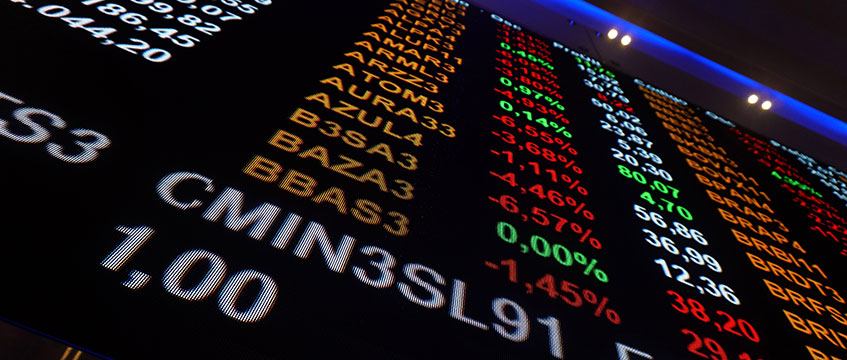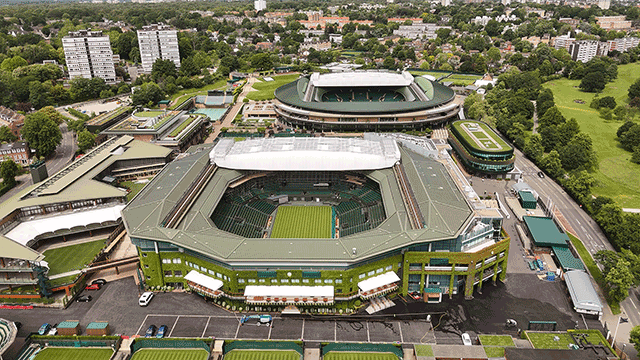What are the causes of depreciation in commercial buildings?
Until recently it could be said that the lifespan of a building would be determined by the longevity of its fabric and that depreciation was relatively manageable and innocuous. Attitudes have changed following the recession which resulted in a slump in demand and a relative fall-off in rental values. In buoyant market conditions, such as those which existed in the early 1970s, the effects of depreciation were largely masked by inflation. Now that the markets have recovered from the shock of the 1973 crash, tenant demand has become far more selective and it is generally accepted that buildings do have a limited life. For an investment to retain its “prime” status, capital must be injected from time to time and this is an element of increasing importance to those involved in making investment decisions.
An increase in the rate of obsolescence, the principal cause of depreciation in buildings, has resulted from the pace and change of technological advance such that buildings may well be rendered obsolete long before the end of their useful physical life. Furthermore, this implies a progressive diminution in rental value and thus a fall in capital value, aggravated by an increase in yield which results from the increased risk resulting from the anticipation of a future fall in rental growth.
Definition
The Accounting Standards Committee of the RICS provided the following formal definition of depreciation:
Depreciation is the measure of the wearing out, consumption or other reduction in the useful economic life of a fixed asset, whether arising from use, effluxion of time or obsolescence through technological or market changes.
Causes of depreciation
Broadly speaking there are two causes of depreciation; physical deterioration and obsolescence. Physical deterioration is simply the wearing-out of the fabric of the building owing to age, condition and an increase in the likely costs of future maintenance.
Obsolescence, on the other hand, has been defined as “value decline that is not caused directly by use or passage of time”.[1] In other words, obsolescene results from extraneous change and is thus far more difficult to predict. The asset may remain as good as ever in itself, but be rendered obsolete by external factors. Physical deterioration is continuous and is usually curable, at a cost, whereas obsolescence will strike at irregular intervals and is thus a more insidious problem.
Obsolescence can be further distinguished and it is possible to identify at least five separate causes which result in value decline:
Economic obsolescence results from a change in the highest and best use for the land on which a building stands and the building becomes obsolete through the enhancement of the development potential of the site. Thus, it is not so much due to the depreciation of the building itself but appreciation in the value of the site. Such changes could be the result of a change in market conditions or a change in planning policies. In real terms the value of the site will rise while the value of the building will decline. It follows that at some point the value of the site will be higher than the value of the building.
Functional obsolescence is the product of technological progress resulting either from changes in occupier requirements or the introduction of new building products. Office buildings for example now need to provide facilities to accommodate information technology needs. If they are incapable of doing this they are no longer suitable for the purpose for which they were originally designed.
Aesthetic and social obsolescence arises as occupiers begin to demand higher standards of visual appearance. Buildings are required to present a modern image. This is dictated by fashion and changes in architectural style and though this might be regarded as superficial, such features are becoming increasingly significant. Occupiers now demand a much better quality environment for their business operations.
Legal obsolescence may result from the introduction of new legislation, the laws controlling matters such as health and safety and fire prevention, for example.
Environmental obsolescence results from changes in the characteristics of a locality. This is particularly significant as it will affect both site and buildings. Land is normally perceived as being relatively free from the problems of depreciation, but clearly changes in the environment will affect land values.
Physical deterioration presents relatively few problems. The differing lives of the component parts of a building can be identified and an owner or occupier should be able to anticipate both the resulting liabilities and when they can be expected to arise.
It is, however, essential to distinguish between the curable and incurable elements of depreciation. Physical deterioration can usually be cured by means of maintenance, repair or piecemeal renewal. However, the problem will be incurable where this requires the introduction of new characteristics into a building which may not be compatible with the existing structure. This will ultimately result in the demolition of a building which is either worn out or whose value has fallen below the value of the cleared site for the same or an alternative use.
Effects of depreciation
Attempts have been made in various studies (eg CALUS)[2] to analyse depreciation in an attempt to assess to what extent the investment performance of a building will be affected and how the effects of depreciation can be ameliorated. The results of these studies are somewhat surprising and they serve to underline just how significant a factor depreciation is. In the case of new office buildings it is generally established that rental values depreciate at a relatively low rate over the first five years of the building’s life, gathering momentum between years 5 and 25 thereafter levelling out but rising again as it ultimately enters the final stage of total obsolescence. The results of the CALUS study found that rental value depreciation was actually higher over years 0-10 than years 10-20, with the highest rate being experienced between years 5-10. In investment terms, because of the time value of money, the levels of return obtained from a building in the early years are of greatest importance so that depreciation occurring in these early years will have a significant effect on investment performance and value.
Depreciation clearly influences the level of income obtainable, but will also affect the quality of the income as the rising costs of repair and running will reduce the net income even where the rental value is not seriously affected. Furthermore, the risks attached to the letting of an ageing building will increase, due to the increased likelihood of letting voids and increased sensitivity of rental value to market fluctuation. Finally, in extreme cases, depreciation may render a building unlettable and incapable of producing a positive income flow.
The CALUS study was able to shed some light on the pattern of depreciation in the capital value of an ageing building, although this will vary with location, particularly according to the ratio of land value to new property value. Their results suggest that, as with rental value decline, depreciation in capital value occurs at a relatively early stage in the building’s life cycle. Individual locations showed a wide variation in the fall-off in capital value, with prime City of London office buildings showing a decline over the first 20 years to 62% of the value of a brand new building, whereas in some other locations the same figure could be as low as 20% to 30%.
Solutions
Curable elements of obsolescence can be resolved by means of capital expenditure but, clearly, the incurable elements cannot. So it is important to take steps to reduce their effect on value and, where they are inevitable, to ensure that the investor is fully aware of their impact.
Design
A great deal can be done to improve the quality of the design of buildings to offset depreciation. At the design stage it should be possible to “ensure that building standards, design and amenities are durable and of a quality which relates to a slow rate of depreciation”.[3] Design should also be flexible enough to allow for future changes in tenant need and for physical changes which may be required.
Management
In many cases it will be possible to offset value decline by carrying out physical alterations to a building even to the extent of total refurbishment to ensure that the potential return from the investment is maximised. However, substantial refurbishment may well prove impossible where the tenant remains in occupation. The solution is to draft the lease to ensure that the landlord has the power to carry out necessary works, or in granting a lease which equates more closely to the estimated economic life of the building. However, the present investment market favours the 25-year lease and landlords who depart from this practice may well risk prejudicing the investment value of the building.
Valuation
Finally, however flexible the building design and lease, some depreciation is inevitable. It is important therefore that the investor is fully aware of its effect. It has been noted that noncurable obsolescence occurs at an early stage in a building’s life cycle, thus affecting the most valuable income flows. This needs to be properly reflected in any investment appraisal otherwise an overvaluation may result.
In a conventional capitalisation, depreciation is undoubtedly one of those elements determining the investment yield. However, as these initial yields are also a measure of growth, inflation and all the other qualities of the investment, it is difficult to be certain whether this does in fact take sufficient account of the likely effects of value decline due to obsolescence. What is required is a more objective method which takes specific account of depreciation as a major variable.
The CALUS study concluded that discounted cash flow methods could be most readily adjusted to take account of this by including the following variables:
(i) Discount rate
(ii) “New building” growth rate
(iii) Date of reversion to residual value
(iv) Residual value
(v) Current rental income
(vi) Dates of rent reviews
(vii) Current rental value expressed as a percentage of “new building” rental value
(viii) Percentage of “new building” rental value attainable at each of the future rent reviews.
The method is illustrated in the following example which refers to a modern industrial building in Manchester of 2,000 m2 on a site of 0.4 hectare. It is let on a standard 25-year lease on FRI terms at £55,000 pa with reviews every five years.
The conventional investment valuation might be as follows:
Table 2 shows the depreciation-sensitive DCF approach. The variables for this calculation were found as follows:
The discount rate or target rate applied in discount cash flow techniques is normally taken to be the internal rate of return required by the particular investor. The rate most commonly used is that which equates to the return on long-dated gilts plus a premium of some 2% to reflect the particular risk and liquidity problems associated with property. At present most valuers see fit to adopt something between 12% and 13% when using discounted cash flow methods in practice: 12.6% is adopted in the example.
The new building growth rate will obviously vary from location to location. Evidence of actual yields analysed in the CALUS study showed that at yields of 12% for industrials in Manchester and an internal rate of return of 12.6%, the implied growth rate would need to be 4%. This reflects investor expectation based on actual market data.
Normal discounted cash flow techniques incorporate a cut-off point by capitalising the value of the building at some point, usually about 30 years. When taking depreciation into account the same approach is adopted but here it would seem logical to take this cut-off point to be the time at which the building becomes so obsolete that a complete rebuild or refurbishment becomes economically logical. In the example this is taken to coincide with the end of the lease, 25 years, as this is the earliest time at which rebuilding would be practicable. It is worth nothing that the study found that, on average, most buildings were likely to be refurbished after about 20 years.
The residual value is taken to be the residual value of the buildings for refurbishment, at this time, or the value of the site for redevelopment, or the investment value of the building if relet in its unimproved state. Which of these is the most appropriate will depend upon the individual circumstances of the particular building. In the example, the residual value is taken to be the site value. This is found by estimating the value of the site at the date of valuation and inflating this figure at the new building growth rate to find the predicted value at the time of redevelopment. The initial site value was taken as £75,000.
The current rental value and the rent review period are standard variables in DCF valuations and need no further explanation.
The rental values expressed as a percentage of the new building value were taken from the results of the CALUS research. Taking examples of actual factory buildings in Manchester, it was found that, on average, rental values declined to 80% of the new building rental value after five years, 64% after 10 years and 45% after 20 years. Using these percentages as a depreciation factor enables the valuer to find the depreciated income attainable for each rent review period. The discounted cash flow for each review period is then found by multiplying the cash flow, first by the YP for the five-year period and then the present value, at the selected discount rate. These cash flows are added to the discounted value of the site to find the total capital value of the building.
In this case the conventional valuation produces an answer which is almost 9% higher than the DCF calculation suggesting, on this occasion, that the market yields adopted for this type of property do not fully reflect the anticipated effect of depreciation, illustrating the danger of using implicit asumptions to arrive at the market capitalisation rate. Of course, the two valuations are not truly comparable. The conventional capitalisation will depend on the choice of the all-risk yield, whereas the DCF approach will vary with the choice of discount rate. The real advantage of the DCF method is its flexibility. By making explicit assumptions about depreciation the investor will be in a better position to judge the true worth of the investment.
Traditionally, property has always been regarded as a long-term investment providing a good hedge against inflation. However, the ability of property to provide real positive growth rates over the long term is being increasingly undermined by rapid economic and technological change. It is essential therefore that in managing and valuing property the surveyor is aware of the fact that in a dynamic economy, the favourable investment rating applied to any one particular building may be relatively short lived.
[1] Bowie “Depreciation of Buildings” Journal of Valuation, Vol 2 pp 5-13, 1983
[2] Centre for Advanced Land Use Studies (CALUS) Depreciation of Commercial Property College of Estate Management 1986
[3] Bowie “The Depreciation of Buildings”







